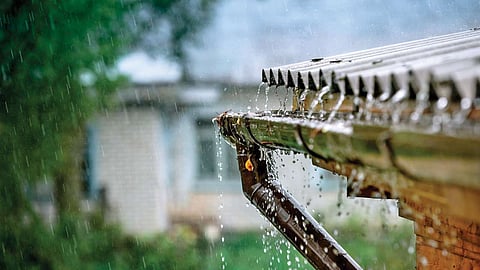IMC installs over 80K Rainwater Harvesting Systems in Indore under Jal Shakti Abhiyan
To beat the falling index of groundwater in the state, Indore Municipal Corporation (IMC) has installed more than 80,000 rooftop water harvesting (RWH) systems, so far, under the Jal Shakti Abhiyan. Groundwater is a renewable resource that when managed properly can ensure a perpetual supply.
Jal Shakti Abhiyan-Catch the Rain, 2022
The shortage of groundwater levels points to a grim situation as it is bound to adversely affect economic and agricultural growth. With a growing population, civic bodies have been stretched to their limits to conserve water. Groundwater is mindlessly extracted by the government and private parties. These are the reasons which make rainwater harvesting indispensable for a country, like ours.
One such mission is ‘Jal Shakti Abhiyan-Catch the Rain, 2022’ which has been implemented in Indore from April 1st and will continue till November 30. The tagline “Catch the rain, where it falls, when it falls” is to nudge the states and stakeholders to create appropriate Rain Water Harvesting Structures (RWHS) suitable to the climatic conditions and sub-soil strata before monsoon.
IMC took up the responsibility of getting the Jal Shakti Abhiyan implemented with public cooperation. The new rules came into effect after the government on April 4 notified IMC (Rainwater Harvesting) Bylaws, 2022. Any violation of the new rules will invite a penalty of ₹5,000.
Indore’s geographical limitation
Indore district lies partly in the Chambal sub-basin of the Ganga and partly in the Narmada basin. The main rivers draining the district in the north are Chambal, Gambhir, Kahn and Shipra. With several rivers originating in the district itself, Indore civic body has been taking various measures via minor lift irrigation schemes.
Reportedly, there are 78 completed surface water minor irrigation schemes and four completed lift irrigation schemes with an irrigation potential of 74.47 sq km in the district. The main source of irrigation in the district is groundwater, which irrigates 1364.02 sq km. Hence, the state is now building a grid of rooftop water harvesting (RWH) systems to find an alternative to fast depleting groundwater in the state.
Other efforts to replenish water bodies in Indore
The civil body had started a cleanliness drive to ensure the purity of water bodies like wells, bawdis and ponds. The initiation is part of the groundwater recharge drive of the water conservation campaign. Additionally, 10 piezometers have been installed across the city to measure real-time groundwater levels.
Under the Pushkar Dharohar Samridhi Abhiyan, renovation of old ponds, check dams and stop dams is also being carried out. A total of 462 such projects were sanctioned, out of which 245 have been completed.
IMC is developing 101 water bodies at an outlay of about ₹13 crores under the AMRUT scheme. Of these, 53 water bodies have already been developed. This project will irrigate 589 hectares and recharge over 600 wells and tubewells.
To get all the latest content, download our mobile application. Available for both iOS & Android devices.

